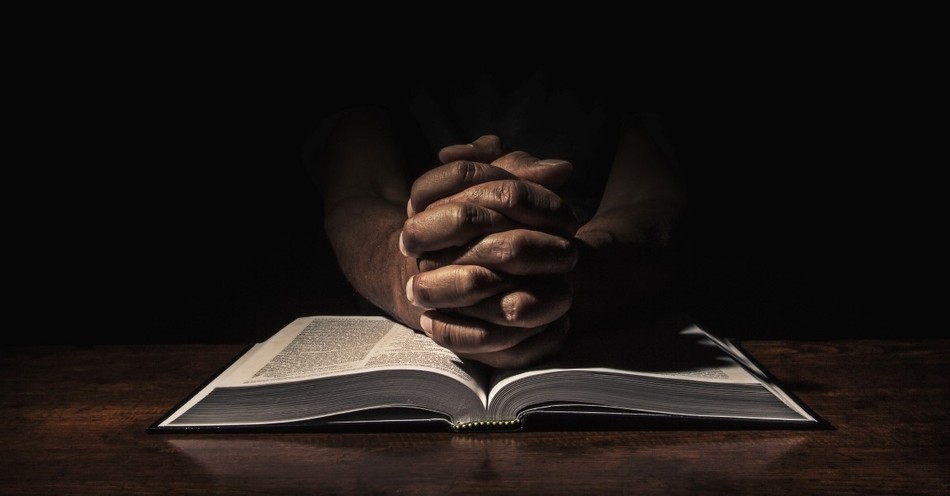My spiritual director leads the practice of lectio divina, Latin for “divine reading,” in our ecumenical group. Lectio divina is a form of meditative or mental prayer when a soul communicates with God directly exchanging ideas. When we practice lectio divina, Scripture comes alive in a personal encounter.
We quiet ourselves and follow a Scripture-studying process, including personal reflection and prayer, while focusing on significant words and phrases in a Bible passage.
The practice of lectio divina may be viewed as a major break from the Roman Catholic and Protestant traditions of reciting prayers written by clergy. More traditional prayers follow a particular formula and are often recited in church services, where a priest or minister leads prayers. This tradition is related to Jesus’ teaching his people to pray the Lord’s Prayer (Matthew 6:9-13). Lectio divina prayers are an individual, spiritual practice.
Where Does Lectio Divina Come From?
Monks in the Middle Ages added the practice of lectio divina to their schedule of monastery prayers, voiced at intervals throughout the day and before the eucharist (or communion).
Benedict of Nursia started this contemplative practice in the Benedictine monasteries he founded across Europe in the sixth century. He is now recognized as Europe’s patron saint.
Before Benedict, Gregory of Nyssa practiced lectio divina in fourth-century Rome. Gregory is revered as a strong Christian church administrator—directing the first large-scale missions to convert pagan Anglo-Saxons to Christianity—and a prolific, scholarly writer. Gregory is the patron saint of teachers and musicians.
Teresa of Avila popularized the practice of lectio divina in the sixteenth century in modern-day Spain. Dollie Wilkinson observes that Teresa was a vibrant, friendly soul who did not practice her faith in the “rigid asceticism and self-denial” of her Roman Catholic peers. Her spiritual and administrative leadership proved vital in a period when Christianity was undergoing reformation and renewal. She earned her place as the first female doctor of the Roman Catholic church in large part because of her reform work and mystical ideas on mental prayer.
Present-day practices of lectio divina have been encouraged by various denominations. Roman Catholic Christians experienced a renewed interest in it thanks to Vatican II and various leaders supporting it. Other denominations have experienced an increased interest in contemplative practices combined with Scripture, making lectio divina newly popular.
Today, lectio divina is practiced in monasteries and by laypeople around the world. While it has shifted somewhat through centuries of practice, its purpose remains to enter into a conversation with God.
Can Protestant Christians Do Lectio Divina?
Although lectio divina has its roots in the Roman Catholic monastic tradition, this method of prayer is for all Christians. “It’s a beautiful way to bring you right into the heart of God,” said Mario Paredes, the American Bible Society’s liaison to the Roman Catholic Church. “Our mission is the Word of God.”
For nearly 500 years after the Protestant Reformation in 1517, Catholics were not encouraged to read the Bible independently. Now, Catholic church leaders support a deep and well-rounded understanding of Scripture. As Paredes said, “. . . not knowing the Bible is ignorance of Christ,” Quoting St. Jerome, he said, “The entire Bible points to one single reality, the person of Jesus.” This strong focus on reading and contemplating the Bible dovetails with the traditional Protestant appreciation for studying the Word of God.
Who Are Some Famous Christians Who Have Used Lectio Divina?
Ambrose, Augustine, and Hilary of Poitiers refer to lectio divina in their sixth- to twelfth-century documents concerning scripture reading.
Teresa also wrote on mental prayer: “For mental prayer in my opinion is nothing else than an intimate sharing between friends; it means taking time frequently to be alone with him who we know loves us. The important thing is not to think much but to love much and so do that which best stirs you to love.”
Though a practical church administrator, Teresa’s book on mental prayer written in 1580, The Interior Castle, is considered a classic.
Another important book on lectio divina was written by Christopher Jamison, a Benedictine monk and former Abbot of Worth Abbey in Sussex, England. He wrote Finding Sanctuary. Jamison states that Bible text is “a gift to be received, not a problem to be dissected. . . let the text come to you.”
Jamison suggests that reading the Bible soulfully requires we read slowly and prayerfully. Meditation leads to prayer, which leads to contemplation of God’s Word. Jamison believes phrases from Scripture remain in our minds, so “prayerful reading becomes prayerful living.” Jamison views lectio divina as an emotional rather than cerebral discipline. It allows us to become like Christ.
What Are the Steps to Lectio Divina?
There are four steps to a lectio divina prayer session:
1. Reading
2. Reflecting
3. Responding
4. Resting
This prayer process may be dynamic, as in the monastery tradition, with moments flowing back and forth rather than in fixed steps. The flow of moments follows the prompting of the Holy Spirit received by an individual.
Lectio divina may also be practiced in a group. A leader sets times for each process step but does not direct an individual’s thoughts and feelings. In a contemporary group setting, participants are merely informed by others’ ideas, and the group does not establish one view of a Scripture verse.
How to Start Doing Lectio Divina
The practice requires you to set aside about 30 minutes for a session: 10 minutes for reading, five minutes for meditation, 10 minutes for prayer, and five minutes for contemplation. Schedule this date with God at a time and place when you can be attentive to His Word.
Before you begin, choose a few verses of Scripture for reading. A shorter passage works better than a longer passage. You may use the church lectionary, verses in a devotional publication, or verses of your choosing.
Four Steps to Lectio Divina:
1. Lectio: Read your chosen passage slowly, over and over, to let it sink in. Read silently and out loud. Focus on the words without trying to figure out what they mean. Simply absorb the passage as a gift from God.
2. Meditatio: Ponder the scripture passage. Select a word or phrase that has a special meaning for you. Focus your thoughts on the selected word or phrase while noticing how you think or feel as a result of reading the passage. Dwell on specific thoughts and feeling related to this word or phrase in the Bible passage. Meditate for a full five minutes. Consider the images in your mind’s eye. Take your time with meditation.
3. Oratio: Ask God to explain what the word or phrase you are focusing on means in your present moment. Invite God to show you what He wants you to do with what He has revealed to you. Pray with persistence, seeking to know how to apply God’s Word to your life. Listen closely for God’s response, trusting He will reward your faithful prayers.
4. Contemplatio: Let the concerns of this world fade away. Pray further, thanking God for the gift of Scripture you have received. Write your thoughts and impressions from this experience in a journal.
For more details, read Whitney Hopler’s Crosswalk.com article, “Lectio Divina: Ancient Practice Yields Fresh Messages.”
The practice of lectio divina will enrich your life and give you a greater understanding and application of God’s Word. Follow the hearts of medieval and modern people in regularly practicing this way of developing a closer relationship with Christ.
“Call to me and I will answer you and tell you great and unsearchable things you do not know.” (Jeremiah 33:3)
Photo Credit: Javier_Art_Photography

This article is part of our prayer resources meant to inspire and encourage your prayer life when you face uncertain times. Remember, the Holy Spirit intercedes for us, and God knows your heart even if you can't find the words to pray.
Prayers for Healing
Morning Prayers
Prayers for Family
Prayers for Surgery
Prayers for Strength
Night Prayers Before Bed
Prayers for Protection
The Lord's Prayer: Our Father




.jpg)